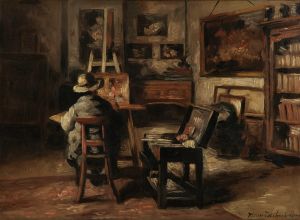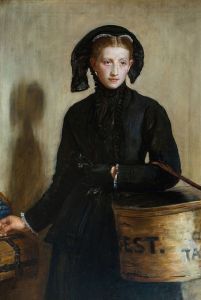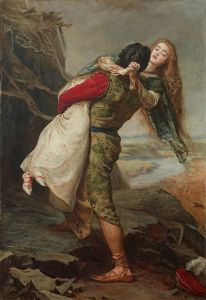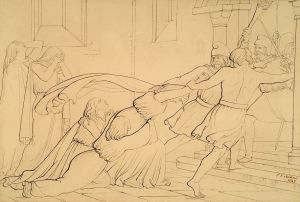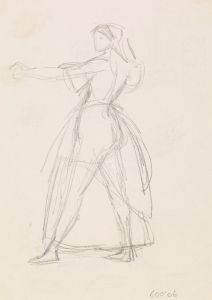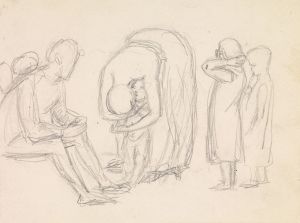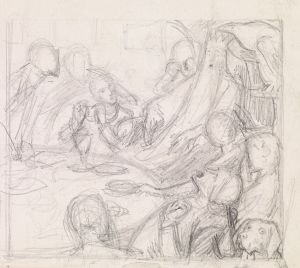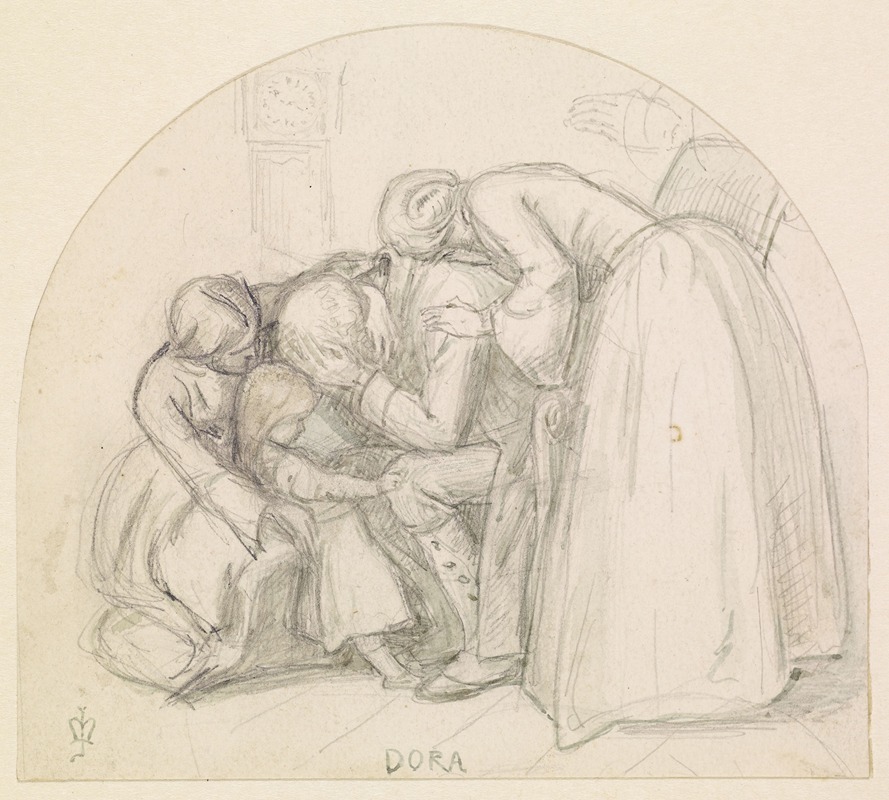
Tennyson’s Dora – Study of Mary, Child and Dora comforting their Father
A hand-painted replica of Sir John Everett Millais’s masterpiece Tennyson’s Dora – Study of Mary, Child and Dora comforting their Father, meticulously crafted by professional artists to capture the true essence of the original. Each piece is created with museum-quality canvas and rare mineral pigments, carefully painted by experienced artists with delicate brushstrokes and rich, layered colors to perfectly recreate the texture of the original artwork. Unlike machine-printed reproductions, this hand-painted version brings the painting to life, infused with the artist’s emotions and skill in every stroke. Whether for personal collection or home decoration, it instantly elevates the artistic atmosphere of any space.
Tennyson’s Dora – Study of Mary, Child and Dora comforting their Father is a painting by Sir John Everett Millais, a prominent British artist and one of the founding members of the Pre-Raphaelite Brotherhood. The artwork is based on Alfred, Lord Tennyson's poem "Dora," which was published in his 1842 collection of poems. The poem tells a poignant story of familial conflict, reconciliation, and love, themes that Millais sought to capture in his work.
The painting depicts a tender and emotional moment inspired by Tennyson's narrative. In the story, Dora, a compassionate and dutiful niece, cares for her uncle and his estranged grandson after a family dispute. Millais focuses on the emotional dynamics of the characters, portraying Dora as a figure of comfort and reconciliation. The composition includes Mary, the child, and the father, emphasizing the themes of forgiveness and familial bonds central to Tennyson's poem.
Millais was known for his meticulous attention to detail and his ability to convey deep emotion through his art. In this painting, he employs a naturalistic style characteristic of the Pre-Raphaelite movement, with a focus on vivid colors, intricate textures, and a strong connection to literary sources. The figures are rendered with great care, and their expressions and gestures convey the emotional weight of the scene.
The painting reflects Millais's interest in storytelling and his admiration for Tennyson's work, which was a significant source of inspiration for many artists of the Victorian era. Tennyson's poetry, with its rich imagery and emotional depth, resonated with the Pre-Raphaelites, who often sought to translate literary themes into visual art.
While the exact date of the painting's creation is not specified, it is consistent with Millais's broader body of work during the mid-19th century, a period when he frequently drew upon literary and historical themes. The painting is an example of how Millais and his contemporaries sought to elevate the status of narrative art by combining technical skill with intellectual and emotional depth.
As of now, the painting is part of a private or institutional collection, and its exhibition history or current location is not widely documented. Further research may provide additional insights into its provenance and reception.









